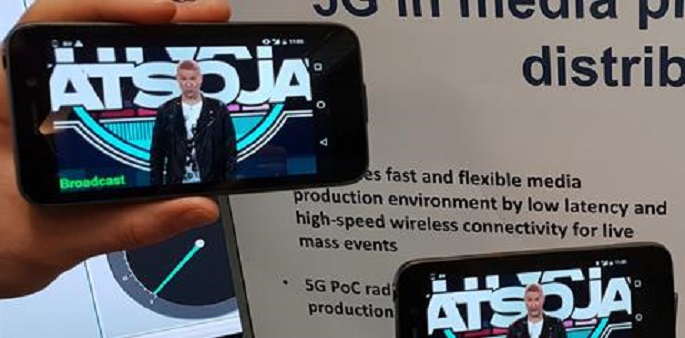5G means seamless video streaming on phones
Published : 23 Nov 2018, 02:15
Updated : 23 Nov 2018, 11:29
National 5G projects have been co-operating with the Finnish broadcasting corporation Yle by relaying Yle TV’s live programmes with 5G mobile wireless network, said the Technical Research Centre of Finland (VTT) in a press release.
For the first time, two areas of Finland have become luminous, and selected commercial smartphones have been enabled to receive live telecast streams in Oulu and Espoo 5G test networks by using evolved Multimedia Broadcast Multicast Service (eMBMS) technology.
eMBMS brings benefits to every party involved. eMBMS content providers can transmit high quality videos to larger audience and, at the same time, operators can have enough spectrum free. It spells much less congested networks and better service quality for every user.
"Most importantly, those Formula 1 or Ice-Hockey finalists will not crash into anymore due to peak traffic congestion. In fact, research shows that the 5G networks by not leveraging broadcasts waste a massive amount of spectrum for delivering the most popular content!,” said VTT Research Scientist Mikko Uitto.
According to the press release, studies indicate mobile traffic will have an eight-fold growth over the next five years, and video will the largest contributor to this growth. For example, Finns already consume more than 10GB data a month, with video streaming accounting for the largest share. In parallel, the number of connected things will double in the same period, meaning even less bandwidth for everyone to go around.
eMBMS is widely regarded as a saviour technology that allows service providers to deliver more services more efficiently and to economically cope with the traffic growth that the market is going to see in the next few years.
eMBMS also offers new chances for certain businesses in areas including national emergency alert, delivering critical communications to the police and firemen, connecting cars to exchange critical information such as speed and location in real-time, and operating system and application updates to prevent security breaches and hacking. All these cases demand networks with higher reliability which is now feasible with broadcast.
"Our objective is to be part of the future media delivery development and 5G networks will be a part of this. Digita is actively developing head-end, the CDN and Transmission side of 5G broadcasting. We are currently planning to set up a HTHP (High Tower, High Power) eMBMS pilot in the capital region in Finland in the spring 2019,” announced Digita Business Development Director Henri Viljasjärvi.
"Yle aims to ensure that our content is available and easily accessible across all networks and all kinds of user terminals and platforms. Our goal is to offer the best public service media experience to the Finnish people and to be the most important media in Finland. In order to reach that goal we also need to be a bold innovator, as it is stated in our strategy. With 5G network broadcasting we can reduce production implementation and costs, while maintaining the broadcast quality and reliability,” said Yle CTO Olli Sipilä.
"We aim to provide a platform for innovation and co-development using 5G technologies. We take a pragmatic approach to make the technology easily available to researchers, start-ups, SMEs and others to untap their creativity, and design new, forward-thinking applications and services", said Jose Costa Requena from Aalto University.
"5G offers ample opportunities to introduce new novel services. The Turku University of Applied Sciences is focused on developing and trialling 5G technologies for new services of which the industry and the media coverage are important components,” said Jarkko Paavola from the Applied Sciences at the University of Turku.


